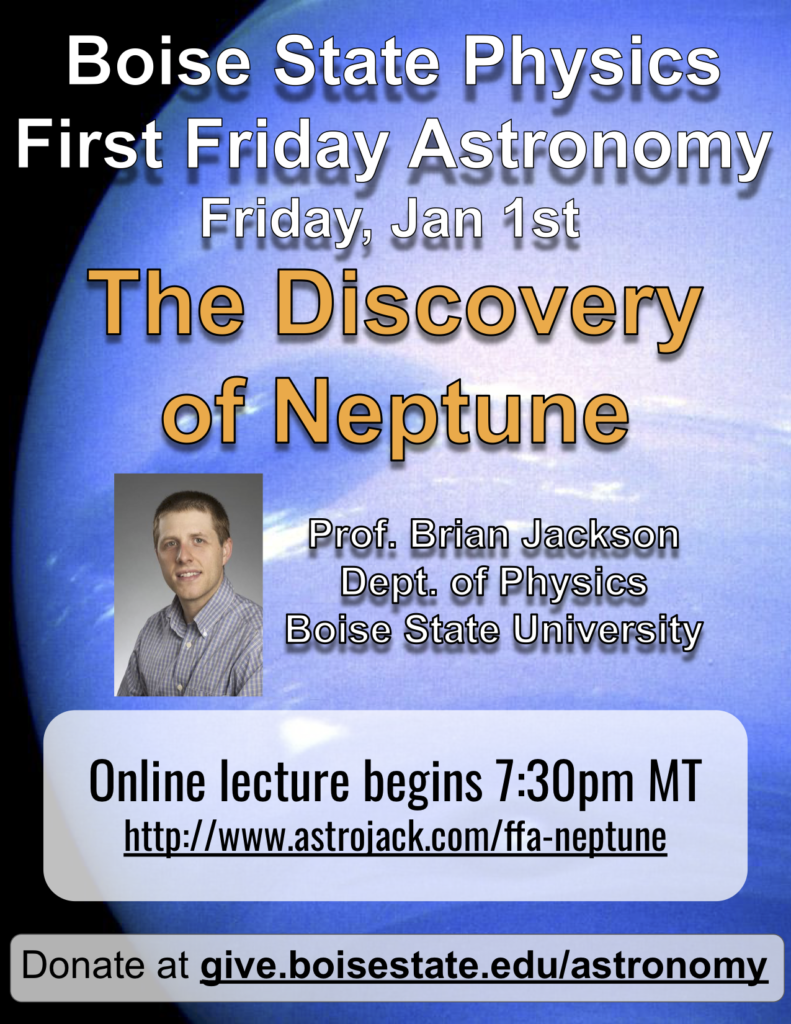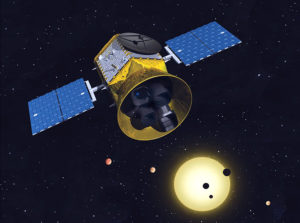exoplanets
All posts tagged exoplanets

In 1986, superstars Lionel Richie and Michael Jackson won a Grammy for “Best Song of the Year” for “We are the World“, a single recorded to support the African charity USA for Africa (https://usaforafrica.org/) to provide food and relief aid to starving people in Africa, specifically Ethiopia where a famine raged. With sales in excess of 20 million copies, it is the eighth-bestselling physical single of all time, and it immediately generated 60 million dollars.
But 1986 also marked the 300th anniversary of one of the most popular science books of all time, Conversations on the Plurality of Worlds. And a NASA mission just over the horizon may turn the sci-fi conversations about alien life from this classic pop-sci book into science fact.
Continue ReadingWhite dwarf stars have been a mystery since they were first discovered. Extraordinarily hot and compact, the engima of white dwarfs was unraveled largely through the herculean efforts of the Harvard computers. Astronomers now know white dwarfs are the final stage of a violent aging process for Sun-like stars. And though astronomers originally expected such violence would spell doom for any planets in orbit, mounting discoveries show that some planets at least can survive this cataclysmic descent into stellar senescence. Whether any life survives on those planets is another matter.
Continue Reading
When the first exoplanets were discovered, astronomers were shocked to find gas giants like Jupiter but zipping around their host stars in days rather than years. These hot Jupiters orbited so close that astronomers worried they might eventually spiral into their stars. Although no one has yet seen a planet disappear, mounting circumstantial evidence suggests perhaps 35% of stars actually do consume their planetary children.
Continue Reading

The TESS Spacecraft.
At our journal club last week, we discussed the discovery of a new warm Jupiter from the TESS Mission.
TESS is the successor to the wildly successful Kepler/K2 Mission and is designed to find exoplanets using the same technique as Kepler – looking for their shadows as planets pass in front of their host stars, i.e. the transit technique.
Sadly, the Kepler spacecraft was officially shut down two weeks ag0 because it ran out of fuel, but TESS, launched last March, is off and running, having already discovered about half a dozen new planets.
One of those planets, we discussed in journal club on Friday – a planet orbiting the star HD1397. The gas giant planet is about the same size as Jupiter but half the mass, making it significantly less dense than Saturn.
The planet also has an unusually eccentric or stretched-out orbit that swings very near its host star, passing to within 8 stellar radii from its star at its closest point. By contrast, the Earth is 200 stellar radii away from the Sun.
If this planet had been discovered 20 years ago, it would have completely stumped astrophysicists, and many would likely have doubted its existence. Nowadays, though, such strange planets are practically the norm in exoplanet astronomy.
So with HD1397 b’s discovery, the exoplanet train rumbles on, and we should expect thousands upon thousands more bizzarities from TESS that will, like Kepler’s discoveries, again re-write the planetary rulebook.
At our research group meeting, we also discussed the art of scientific presentations. I’ve pasted the example presentation I gave below.
At our research group meeting on Friday, we discussed an interesting paper from Dr. Tom Barclay and colleagues, which explored how many and what kinds of planets we might find with the TESS mission, launched in April this year.
As Barclay et al. argue, trying to estimate the planet yield from an upcoming survey provides several benefits. For instance, knowing how many planets TESS may find can help astronomers figure out how much time to allot for follow-up observations at large observatories. Also, thinking about TESS discoveries is like staying awake on Christmas eve, anticipating all the presents – it’s just plain exciting.
And make no mistake – TESS will be another game-changer. Kepler focused on figuring out how many of each kind of planet there is in our galaxy, but as one of the trade-offs to facilitate this kind of statistical study, most of the systems found by Kepler are much too far away and dim for us to conduct follow-up studies and learn more about the systems.
TESS takes a different tack, focusing on bright, nearby stars for which additional characterization of the planets will be easier. For instance, some of the planets discovered by TESS will be observed by NASA’s next behemoth, the James Webb Space Telescope, which will reveal the planets’ atmospheres in exquisite detail.
Barclay’s paper lets us shake the presents under the TESS tree, hinting at the goodies inside. By modeling a wide variety of planets in orbit around the 3+ million stars that TESS will see, they try to simulate the kinds of observations the mission will collect and figure out which planets TESS can find easily and which ones it will struggle with.
For example, they find TESS may discover nearly 300 planets with radii smaller than twice the Earth’s. Among these potentially Earth-like planets, roughly ten will orbit in the temperate zone, making them possible oases for extraterrestrial life.
After reading these results about potentially habitable planets, I was also excited about their prediction that TESS may find 12,000+ giant (i.e. Jupiter-sized) planets. Barclay et al. caution that these objects will be especially hard to distinguish from astrophysical false positives. But these planets may also reveal some of the most interesting astrophysical phenomena, so if there are any clever tricks to extricate these planets, the effort might prove worthwhile.